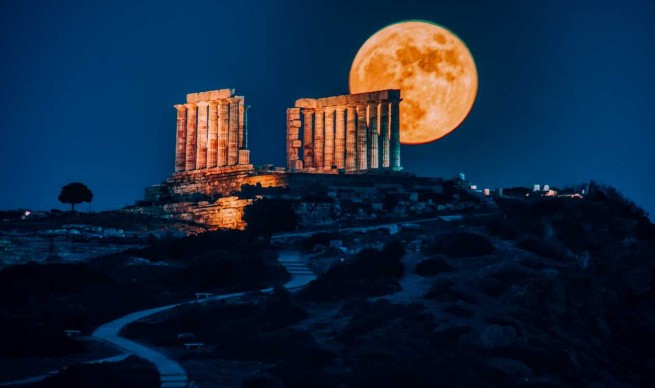June's full moon, or Strawberry Moon, will light up the sky on June 21, just hours after the longest day of the year.
The appearance of the full moon immediately after the summer solstice is a phenomenon that occurs approximately every twenty years. The eclipse of the largest and brightest star, Antares, in the constellation Scorpio, will be visible in many areas of the Pacific Ocean.
The phenomenon will be particularly striking in Papua New Guinea and the Fiji Islands. For astronomy lovers, the Moon will present magical images in other areas of the world, because it will pass very close to Antares. Observers in North America will see a very close passage of the Moon to the south of the star.
The Full Moon is visible when the Earth's satellite is opposite the Sun and the Earth is between them. On the “night” side of the Earth, this means that observers can see the fully illuminated Moon. Full moons are calculated relative to the positions of the Moon and Earth. The time of the full moon is the same all over the world, meaning that any perceived differences at such times are due solely to the observer's time zone. The full moon will begin at 4am on June 21st.
Why did the first full moon of summer get such a delicious romantic name? Ancient Indian tribes from North America actively monitored the phases of the moon. According to the specialist, the moment of the first summer full moon coincided with the picking of berries, which is why ancient astrologers nicknamed it the strawberry moon.
There is a second version of the origin of the name. Some astrologers claim that the phenomenon is named after the red, almost strawberry color that the Moon turns into in the sky at the beginning of summer. The Earth's satellite acquires such an atypical shade thanks to the Sun, which at this time illuminates the Moon from a special angle.
Other nations have no less interesting names for this phenomenon. For example, for the Chinese it is the Lotus Moon, for the inhabitants of the southern hemisphere of the planet it is the Cold or Oak Moon. Medieval Europeans called the first full moon the Honey or Rose Moon. For many peoples, the appearance of a round disk of a luminary in the sky was a significant event. On these days, national holidays and celebrations were held.
There are countries where the tradition of celebrating the appearance of the Strawberry Moon is still alive. For example, the people of Sri Lanka still honor this centuries-old custom. On June 21, 2024, the island's residents will celebrate one of the most significant holidays in Buddhism – Poson Poya. During the Boseong Festival, the sale of meat and alcoholic beverages is prohibited. Believers take part in religious rituals and launching paper lanterns.
Next full moonwhich is called the Deer Moon, will occur on July 21, 2024.







More Stories
Weather forecast for today and the coming days: hot and windy, high risk of fires, rain in some places
Ice hail in midsummer
Southern Europe on the eve of a powerful African heat wave (video)